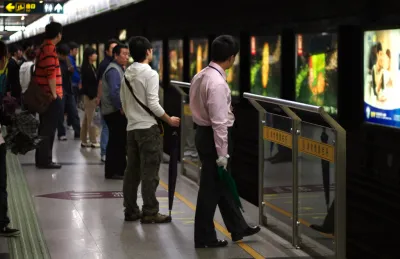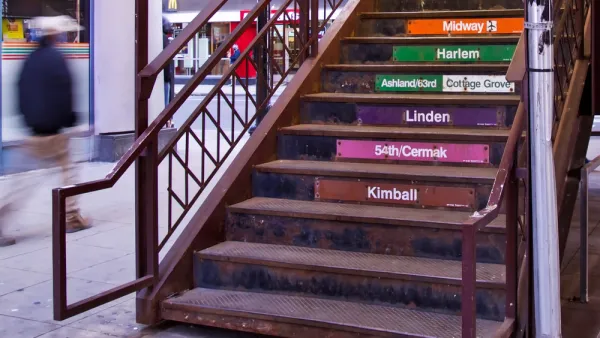The problem, Paul Rosenstiel writes, isn't a scarcity of capital. It's an unwillingness to make investing in infrastructure a lucrative choice for private capital.

It's becoming a recurring theme to remark on what China can do that we can't. According to Paul Rosenstiel, former deputy state treasurer for California, we've become used to a diminished version of what's possible. "During the nearly identical years that the Shanghai Metro went from nothing to the largest subway system in the world, California struggled just to replace a few miles of the San Francisco-Oakland Bay Bridge damaged by the 1989 Loma Prieta earthquake."
Gloomy as that sounds, Rosenstiel says the money's there waiting to be invested. "We don't need capital. What we need is a revenue source to provide a return on that capital. But for a quarter-century, we haven't been able to find the political courage to leverage that capital by taking such an obvious step as raising the federal gasoline tax."
True momentum on infrastructure would mean a move away from "bromides" like public-private partnerships or infrastructure banks. If private investors could be certain of a return, either via higher taxes or user fees, they'd be happy to kick in the billions necessary. What we need is more decisiveness about what to build in the first place.
FULL STORY: China Can Build Infrastructure. Why Can’t We?

Analysis: Cybertruck Fatality Rate Far Exceeds That of Ford Pinto
The Tesla Cybertruck was recalled seven times last year.

National Parks Layoffs Will Cause Communities to Lose Billions
Thousands of essential park workers were laid off this week, just before the busy spring break season.

Retro-silient?: America’s First “Eco-burb,” The Woodlands Turns 50
A master-planned community north of Houston offers lessons on green infrastructure and resilient design, but falls short of its founder’s lofty affordability and walkability goals.

Test News Post 1
This is a summary

Analysis: Cybertruck Fatality Rate Far Exceeds That of Ford Pinto
The Tesla Cybertruck was recalled seven times last year.

Test News Headline 46
Test for the image on the front page.
Urban Design for Planners 1: Software Tools
This six-course series explores essential urban design concepts using open source software and equips planners with the tools they need to participate fully in the urban design process.
Planning for Universal Design
Learn the tools for implementing Universal Design in planning regulations.
EMC Planning Group, Inc.
Planetizen
Planetizen
Mpact (formerly Rail~Volution)
Great Falls Development Authority, Inc.
HUDs Office of Policy Development and Research
NYU Wagner Graduate School of Public Service


























